Things I got to learn travelling Uttrakhand on cycle
Crossed by the Himalayas, Uttarakhand is known as the “Land of Gods” (Deva Bhumi). This holy land is dotted with temples located in some of the highest places in the world, and both locals and visitors come to pray, feeling a deep sense of spirituality and devotion. Unlike its predecessor state, Uttar Pradesh, Uttarakhand has distinct demographic and geographical characteristics. The state’s hilly terrain makes it a prime tourist destination for people from northern India, contributing significantly to its economy.
Despite the thriving agricultural sector, farming in Uttarakhand faces numerous challenges. The lack of job opportunities, coupled with threats from wild animals and issues like heavy rains and landslides, makes life difficult for the locals. The state is divided into two main regions, Kumaon and Garhwal, where residents speak Kumaoni and Garhwali, respectively. Despite the linguistic differences, the cultural similarities between these regions are striking.
During my bicycle tour across Uttarakhand, I observed a stark contrast in the culture and lifestyle compared to other parts of India. The people, despite the hardships of living in such rugged terrain, appeared happy, content, and exceptionally welcoming. In this article, I will summarize my experiences and the lessons I learned while traveling through this remarkable state. I have tried to minimize bias, though I acknowledge that my mode of travel and personal perspective may influence my observations. Please feel free to correct any misunderstandings by commenting on this post.

The land of Gods
Uttarakhand is aptly called the “Land of Gods,” and my journey through this mystical region revealed why this title is so fitting. Nowhere else have I encountered a place where spirituality and religious beliefs are as deeply woven into the fabric of daily life as they are in Uttarakhand. The people of the hills hold a profound belief that Devi and Devatas, spiritual manifestations of God, preside over the land. These deities are not mere symbols but active participants in the lives of the people, guiding their actions and shaping their morals.
One of the most compelling beliefs in Uttarakhand is the notion that any wrongdoing will inevitably result in divine retribution. The people believe that the deities will impose consequences in the form of various troubles in one’s life, a belief that instills a deep sense of humility and morality. This pervasive sense of divine oversight influences the behavior of the residents, making them exceptionally grounded and conscientious. It is rare to find thoughts of wrongdoing even crossing their minds, as they are constantly aware of the spiritual consequences.
Throughout my journey, I encountered numerous stories that illustrated this belief in action. Tales of individuals who wrongfully acquired even a small piece of land and subsequently faced divine punishment were common. These stories are part of the local lore, passed down through generations, reinforcing the moral fabric of the community. Conversations with strangers frequently included references to angels, demons, and spiritual energies, highlighting the deeply ingrained nature of these beliefs. This was true even among the well-educated individuals from prominent backgrounds, demonstrating that education and modernity have not diminished the spiritual ethos of the region.
Uttarakhand is home to an astounding number of temples, each with its own unique powers and belief systems. These temples are not just places of worship but are seen as the abodes of specific deities who protect and bless the local populace. Every district has its own set of deities that the people venerate, creating a rich tapestry of religious practices and traditions across the state. Each temple, with its distinct set of rituals and legends, contributes to the overarching sense of spirituality that pervades the region.
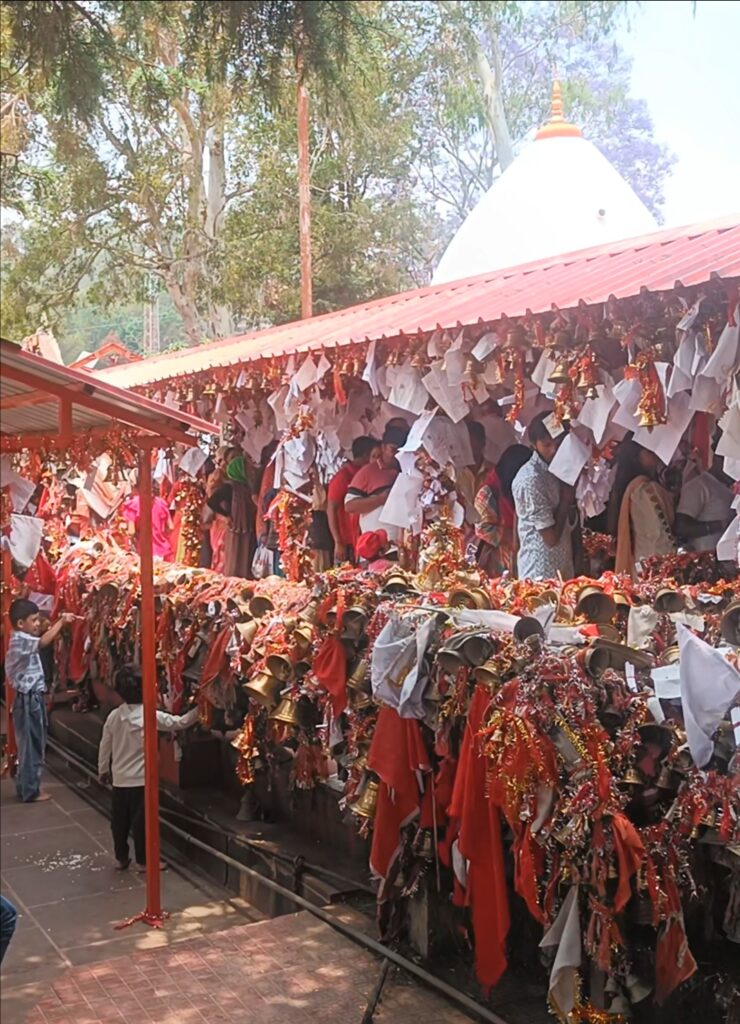
Tourism
It was surprising to see hotels and homestays located in the most remote areas of Uttarakhand. A significant portion of the state’s revenue comes from tourism, yet it appears that wealthy outsiders predominantly set up these accommodations, as locals primarily engage in farming and rarely venture into business. During my visits to numerous large homestays, I found that while the ownership was in the hands of outsiders, the workforce consisted of local people. Hotels and homestays do not just offer comfort; they primarily sell the “view.” The better the view, the higher the price.
The influx of outsiders establishing businesses has led locals to demand legislation that restricts non-residents from buying or selling land in Uttarakhand. However, the BJP government seems reluctant to support this idea.
Summer is the peak season for tourism in Uttarakhand, attracting visitors seeking cool weather. Additionally, the Char Dham Yatra and Pancha Kedar Yatra take place during this time. I observed that 8 out of 10 vehicles were from Uttar Pradesh, with a few from Punjab, Haryana, and Rajasthan. Tourists predominantly came from these four states. Upper-middle-class families flocked to popular destinations like Nainital, Almora, Ranikhet, and Srinagar in the Kumaon region, while lower-middle-class families visited holy sites in the Garhwal region by bus. Unfortunately, tourists in both regions often displayed irresponsible behavior.
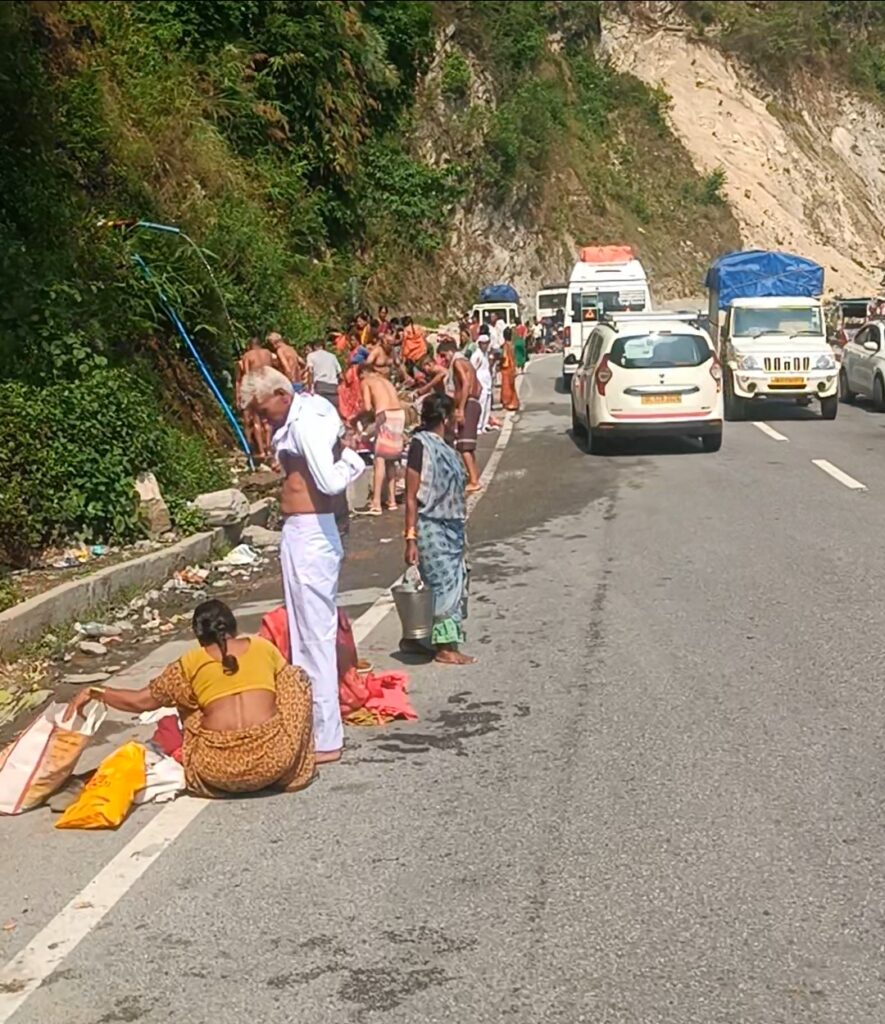
Curious about the historical influx of tourists, I asked locals about the situation. It was surprising to learn that social media has significantly influenced tourism in Uttarakhand over the past 6 to 8 years. The widespread sharing of pictures and videos has attracted large crowds to previously lesser-known spots. Even secluded locations known only to locals have become popular tourist destinations thanks to social media.
Locals lament that many visitors come for “pradarshan” (showing off) rather than “darshan” (seeing God). For instance, the Neem Karoli Baba Mandir, once visited primarily by locals, now experiences five-kilometer traffic jams, especially since Virat Kohli’s visit drew significant attention. Similarly, Kedarnath, which used to see visits mainly from elderly locals, now faces up to 50 kilometers of traffic, with reports of people dying en route due to the congestion.
Life in the hills
Living in the hills of Uttarakhand is no easy feat. The Pahadi people are exceptionally hardworking, with children, women, and even the elderly laboring daily to sustain their livelihoods. Homes perched high on the hills often require treks of several kilometers, and sometimes even tens of kilometers, to reach. Children frequently walk as much as 10 kilometers to and from school. Women can be seen climbing trees to cut wood, and elderly individuals carry hay on their backs up steep inclines.
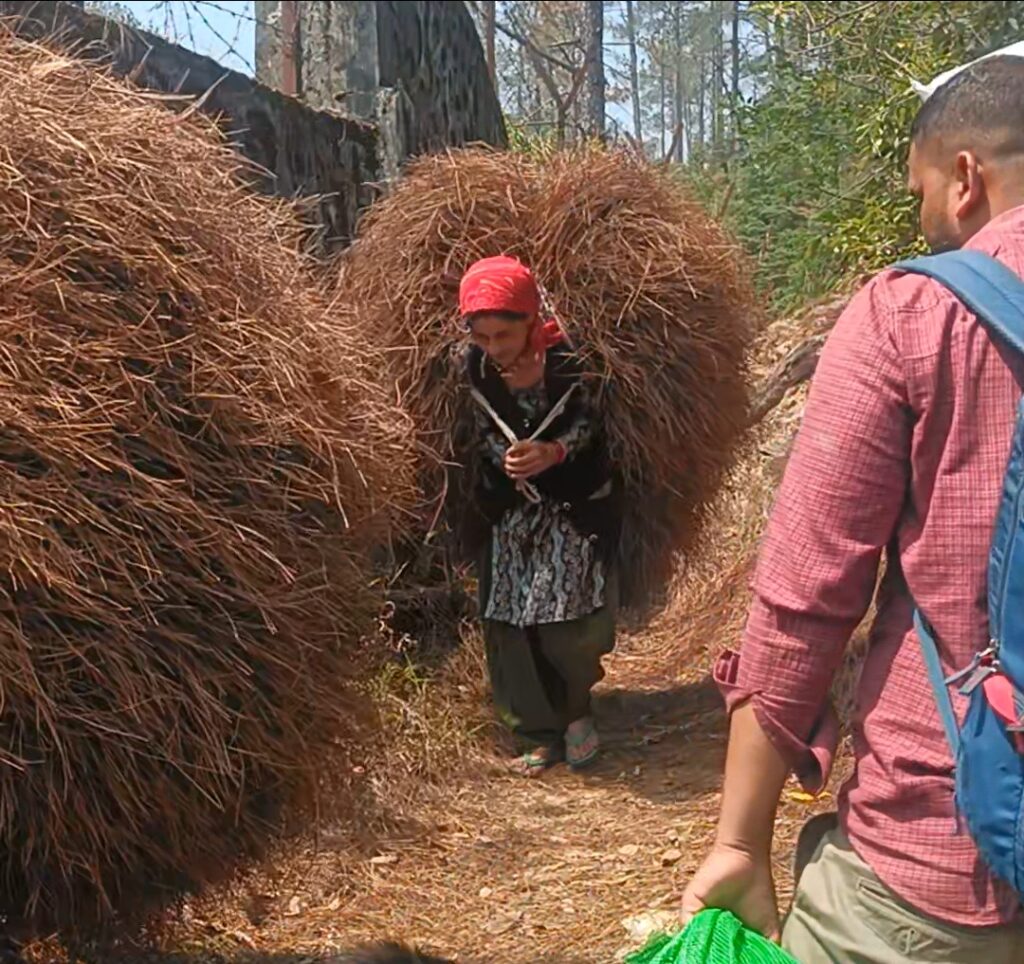

Farming, particularly the cultivation of lentils, is the main occupation for most residents. Their diet primarily consists of rotis, a variety of lentils, millets, green leafy vegetables, and several types of citrus fruits. During my journey, I found the local pulses and leafy vegetables to be some of the tastiest dishes I have ever had.
Transporting heavy materials up the hills is a significant challenge due to the lack of accessible roads. As a result, locals often use horses for transportation and carry raw materials on their backs. I witnessed many people trekking with heavy loads, showcasing their remarkable strength and endurance.
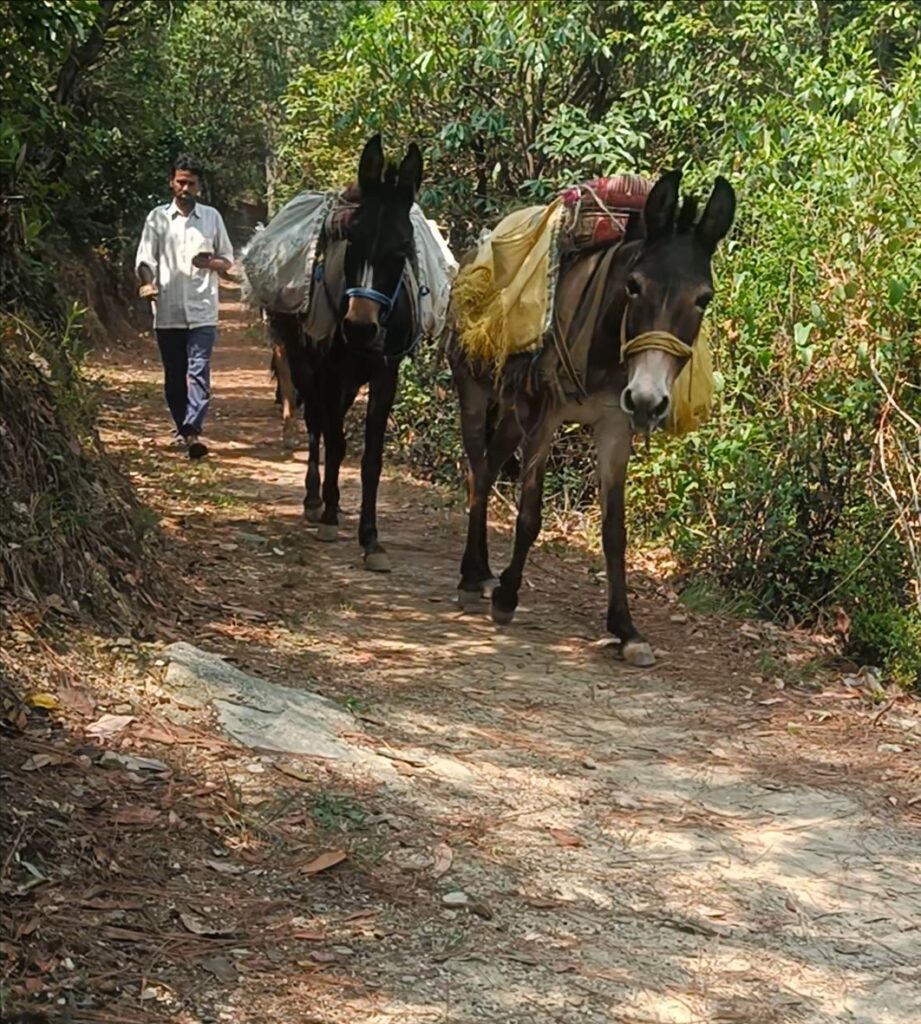
Boundary markers in the region are not built with cement fences but with cut stones, taking advantage of the abundant natural resources. These stone walls can stretch for tens of kilometers, with each small rock laid meticulously by hand, a process that can take three to five years to complete. Many of these boundaries, built hundreds of years ago, still stand today. It is common to see locals breaking rocks with their own hands, carrying them on their backs, and placing them piece by piece to construct these enduring walls.
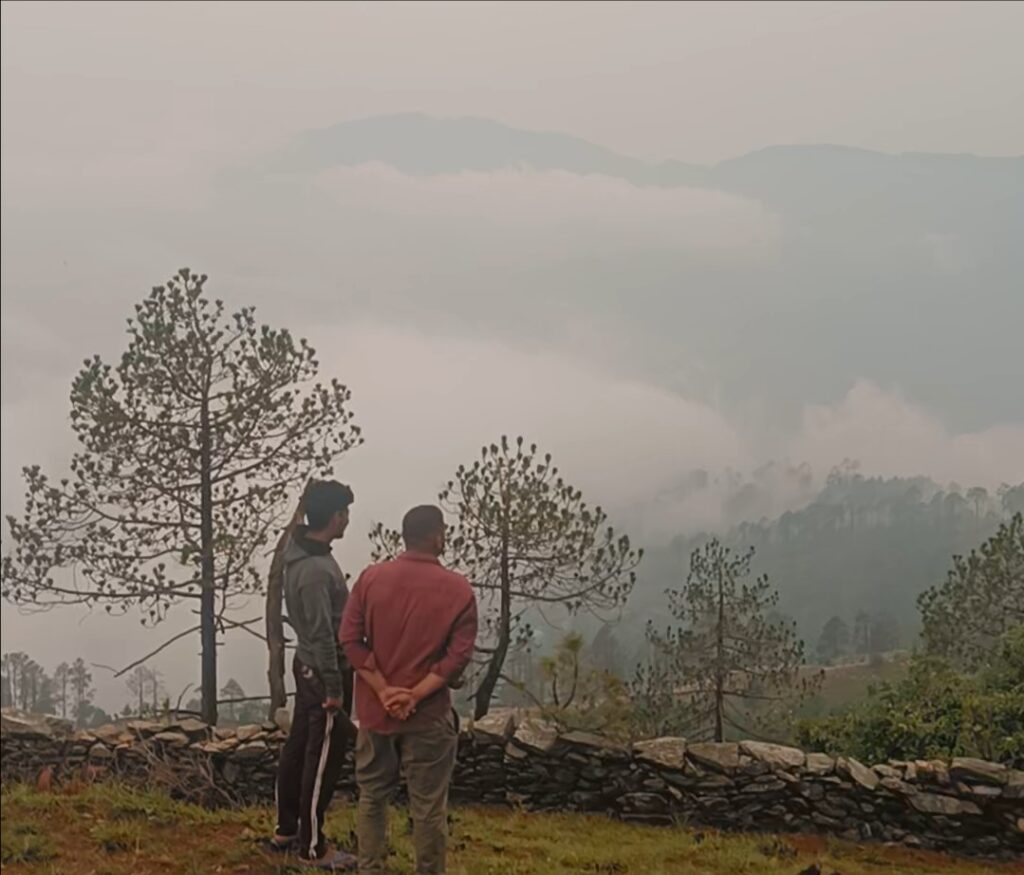
In addition to tourism, alcohol sales contribute significantly to the state’s revenue. Drinking is a common pastime among the locals, with many households having at least one person who consumes alcohol daily.
Infrastructure
Uttarakhand has experienced a development trajectory similar to other states in India. Over the last decade, infrastructure has expanded rapidly. Like Jharkhand and Chhattisgarh, which benefited from separating from their parent states, Uttarakhand has secured its revenue and assets since splitting from Uttar Pradesh. During my visit to Almora, a local explained how the area has seen a significant increase in settlements over the past decade. Roadways and electricity lines have reached remote locations that previously lacked such amenities.
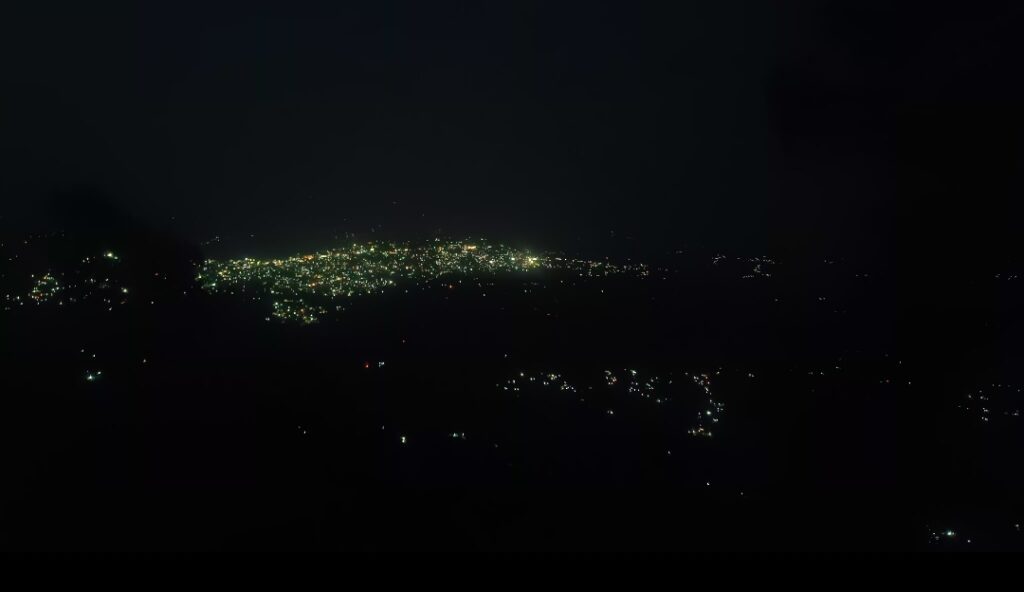
People in the hills rely on natural water sources called “shrods,” which emerge from the mountains. Pure water flows from these springs and is collected in bunds. Villagers gather water from these communal spots daily. While some villages have multiple shrods, others depend on a single source. The government has also installed hand pumps across Uttarakhand, providing additional access to water. It is common to see people washing clothes and carrying water from these natural sources and hand pumps to their homes.
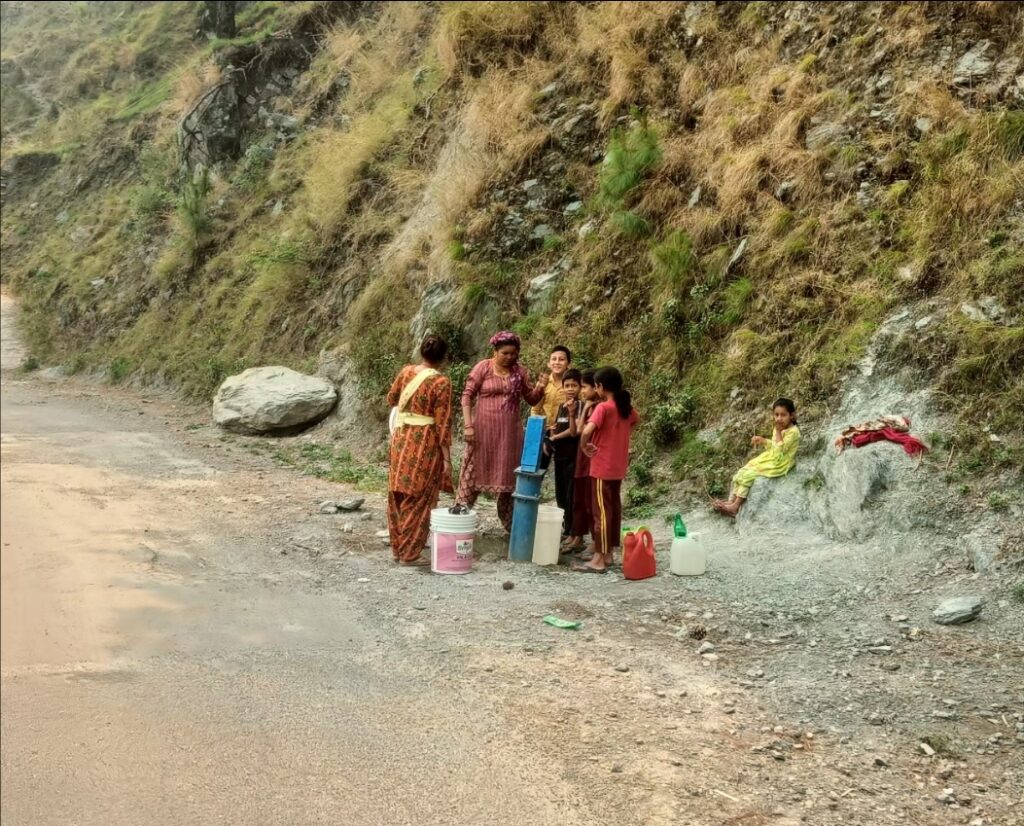
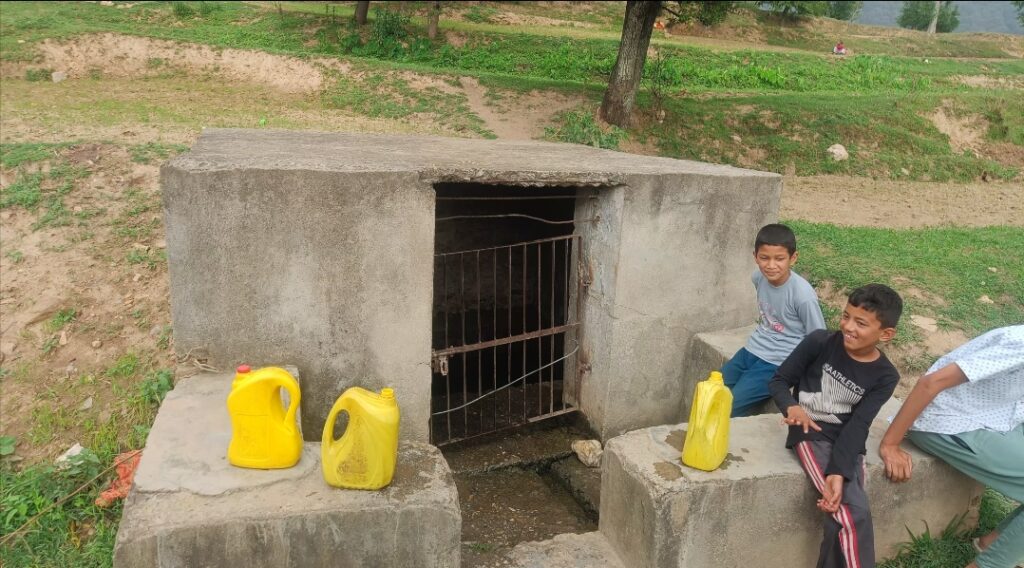
The implementation of the “Har Ghar Jal Yojana” under the BJP government has significantly improved water accessibility. This initiative has brought purified water from nearby rivers directly to households via taps, making life easier for the residents. Makeshift tanks and hand pumps are no longer the primary water sources for entire villages. Some villages have seen the installation of water taps as recently as six months ago.
In terms of infrastructure, construction and sewage systems in the hills differ from those in the plains. Unlike the plains, where dedicated sewage lines are common, waste in the hills is often fed into the ground. Large pits are dug, over which sanitary rooms are built, preventing waste from flowing into rivers due to the sloped terrain. Construction on the hills adheres to strict government regulations regarding waste disposal. There are designated dumping yards for debris from excavated mountains, ensuring that environmental standards are maintained.
Education
Just as every region has a set of professions that its younger generations gravitate towards, Uttarakhand too sees its youth primarily aspiring to join the army, clear government job exams, or pursue hotel management studies. While the fascination with becoming a chef or working in hotel management is widespread in Uttarakhand, the origins of this trend remain somewhat unclear. Some locals suggest that children learn to cook at an early age and view a career in the culinary field as a ticket to explore other parts of the country and even the world. The appeal of having free accommodation and meals while earning a salary is quite enticing for them.
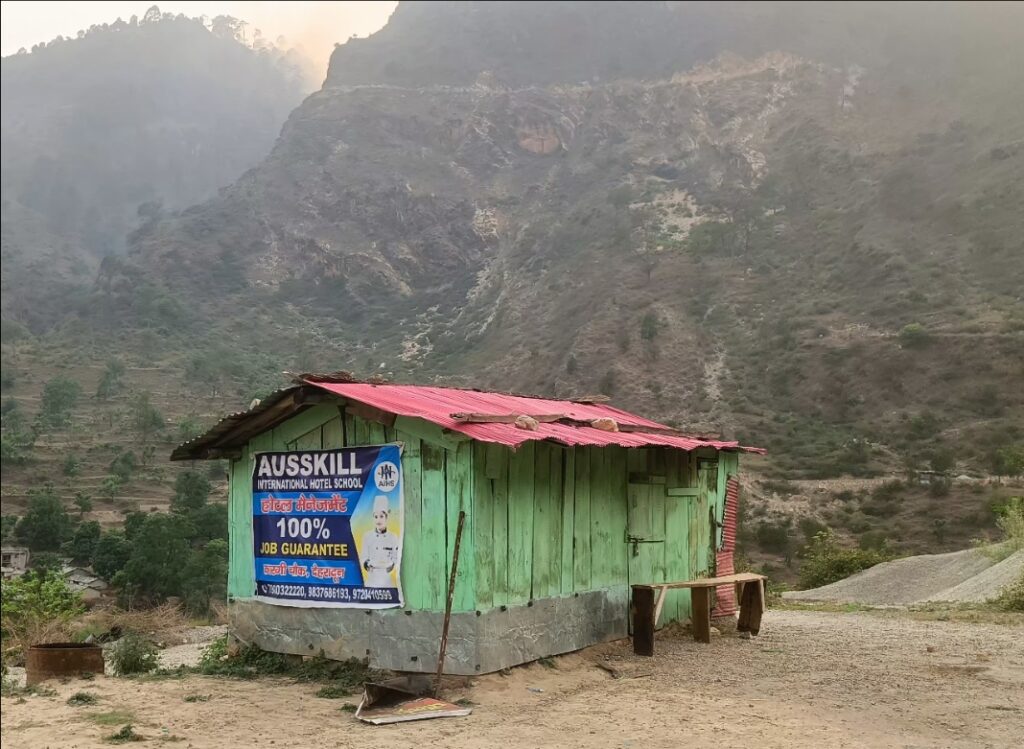
Many young people also express a desire to escape the traditional and often restrictive norms of village life. They crave the freedom that comes with living independently, away from the rigid expectations of respecting elders and adhering to their final word. As a result, most youngsters prefer to move away after completing their studies. This trend is particularly pronounced in the Kumaon region, which is developing at a faster pace compared to the Garhwal region. In Garhwal, a lack of local job opportunities often hampers educational aspirations, further driving the youth to seek opportunities elsewhere.
This exodus of young people has led to one of the biggest issues facing villages in Uttarakhand: the emergence of ghost towns. As the youth leave and settle in different parts of the country, they abandon their native villages. During my travels, I had the opportunity to visit a small village with only two houses perched on a hill, accessible after a strenuous three-kilometer trek. Despite having 11 middle-aged children, all with their own families, these houses were inhabited only by the elderly. In the past, limited job opportunities led families to settle together, forming entire villages. However, as people have started moving away in recent times, ghost villages have become increasingly common.
There is even a saying in Uttarakhand that “the kids and the water that arise from here don’t belong here. Both move out.” This poignant observation underscores the migration trend and the resulting depopulation of the region’s villages.
The issues
In addition to the significant issue of youth migration leading to the formation of ghost towns, the people of Uttarakhand face numerous challenges due to the harsh terrain and weather conditions. Climate change has caused areas of Uttarakhand, which previously never experienced intense heat, to endure hotter weather similar to the rest of India. Although not as extreme, this has accelerated the cycles of heating and cooling in rocks, resulting in their quicker deterioration and causing landslides. Besides landslides, the region also suffers from frequent forest fires and storms that lead to fallen trees. Reports of fatalities due to trees falling during storms are common.
If the terrain isn’t posing enough challenges, the threat from wild animals, particularly leopards, adds to the difficulties faced by the people of Uttarakhand. Leopards frequently snatch away pet dogs and cattle, and there have been numerous reports of man-eaters in several regions.

Culturally, Uttarakhand is experiencing a threat in the form of language loss. The Kumaoni and Garhwali languages do not have their own scripts, and like in Chhattisgarh, fewer people speak these languages over time. This linguistic decline is a significant cultural concern.
Furthermore, while several large cities in Uttarakhand are developing rapidly due to the influx of tourists and the growth of the tourism sector, the villages are not seeing similar progress, leading to significant disparities. This has resulted in a polarized population, with one group struggling to earn a livelihood while the other thrives.
Nature of people
The first thing that an outsider will notice upon arriving in Uttarakhand is how kind and welcoming the Pahadi people are. Initially, their high-tone conversations might sound like arguments, but more often than not, they are smiling and laughing, even while speaking loudly. I hardly witnessed any locals fighting or getting angry.
In the Garhwal region, which attracts more visitors to its holy spots compared to the Kumaon region, some locals might charge tourists excessively. However, both regions are home to people who are kind enough to say thank you when you pay for your purchases, a remarkable courtesy I hadn’t encountered elsewhere. While locals may take some time to trust outsiders, once they do, they treat them like family and offer help without any ulterior motives.
Their deep fear and reverence for God keep them extremely grounded and humble. This spiritual devotion has also led to an exceptionally low crime rate, the lowest I have seen in the country so far.
Another distinctive feature of Uttarakhand is the lack of casteism. People show respect to everyone, regardless of their background. It’s common to see locals, especially children, bowing to the elderly. Children often greet and seek blessings from everyone they meet in the village. I vividly remember a conversation with a student from Saraswati Shishu Mandir, a chain of schools in Uttarakhand, who humbly said, “Mein vidya prapt kiya” (I attained knowledge) instead of the usual “shikshan liya” (I received education).
Overall, my travels in Uttarakhand taught me how welcoming and selfless people can be. The respect I received was unparalleled to any other part of India. If there’s one thing I take away from this place, it is the lesson of humility and respect for every human being. This is all the information I could gather from my brief visit to Uttarakhand. If you have any objections to my observations or additional insights to share, please feel free to comment below.
I am a 31 year young PhD graduate who has decided to travel the length and breadth of India on my cycle, to document the journey of meeting a vast array of people. In my journey, I intend to understand the characteristic features of the people of this nation and categorize them based on their demographics, age, profession, gender, traditions, and cultural differences.